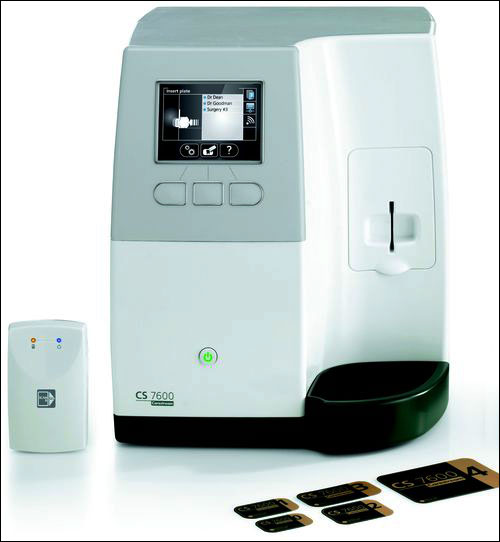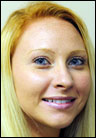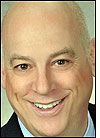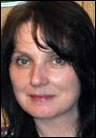Many dentists are transitioning from traditional X-ray film images of patients’ teeth to reusable phosphor plates or digital photos, eliminating the need for X-ray film, chemicals and film-processing machines. The Carestream Dental division of Carestream Health provides those upgraded solutions for image capture and storage, but has also added another element to ensure that images are properly transmitted and stored: radio frequency identification. By employing RFID, the system enables dental employees to link a patient with a specific computer, so that as the X-ray images are transmitted via a Wi-Fi connection, or uploaded through a Carestream Dental device, they are received only by the appropriate computer—the one in the room in which the patient is located.
In the case of both products—models RVG 6500 and CS 7600—RFID is intended to eliminate potential confusion regarding which phosphor plates or digital images belong to which particular patient, and in which room. In this way, the X-ray process can be made easier and the images can be collected within seconds, to be viewed by employees and patients.

The Oakland Center for Cosmetic Dentistry, located in Pittsburgh, is utilizing one of Carestream Dental’s RVG 6500 digital X-ray sensors, which sends electronic X-ray images to a computer via a Wi-Fi connection. To ensure that the computer displays the correct X-rays for the patient being treated, an optional high-frequency (HF) RFID tag can be attached to each computer used to view the digital X-ray images. In this way, the dental practitioner who took the X-ray images can receive those pictures on his or her computer, in the same room in which that person is working, and can review them without delay, knowing immediately if an image is clear, or whether it needs to be retaken.
Carestream Dental’s second and latest product with RFID functionality, released in February of this year, is the CS 7600 model. Instead of using film or an electronic X-ray sensor, the system employs phosphor plates, which are exposed in the same way as traditional X-ray film. The images recorded on the phosphor plates are then scanned, digitized and displayed on a monitor, and are saved to the user’s computer. The solution also includes a Scan & Go option, whereby the phosphor plates are embedded with 13.56 MHz RFID inlays, compliant with the ISO 15693 RFID standard, to electronically link the plates with the corresponding patient information and automatically route the scanned images to the proper computer and patient file. The CS 7600’s Scan & Go device comes with a built-in 13.56 MHz RFID reader that captures the ID number of a phosphor plate’s tag and confirms that the information is directed to a specific computer, explains Denika Smallwood, Carestream Dental’s product specialist for imaging. However, Smallwood says, the CS 7600 device does not transmit data wirelessly, as the RVG 6500 model does.
In the case of the CS 7600 system, the practitioner uses “smart” (RFID-tagged) plates to capture images in a patient’s mouth. A plate is first placed into a hygienic sheath, after which an employee holds the smart plate in front of the Scan & Go device’s built-in reader. The interrogator captures the unique ID number of that plate’s embedded RFID tag, linking that ID with data input into the system, such as the patient’s and dentist’s names, along with the tooth number. That information is written to the plate’s tag and is stored there, as well as in the back-end system. The smart plate is then placed in the patient’s mouth, an image is taken and the plate is inserted into the CS 7600 device, which could be plugged into an Ethernet jack anywhere within the office. The CS 7600 system captures the ID number, along with patient data, the image is digitized and the software links the ID with the appropriate computer, for review by the dental staff. The image stored on that plate can then be erased so that the plate can be reused.
Stephen Miller, the dentist who runs the Oakland Center for Cosmetic Dentistry, has traditionally sampled new technologies that might improve the quality of service for patients, and says his patients are accustomed to seeing new technologies in action. He has been using digital imaging for X-rays for many years, he explains, and when Carestream Dental’s RFID-enabled RVG 6500 solution became available, he acquired one—which he now uses to capture digital images of patients’ teeth, and to then forward that data to a computer via a Wi-Fi connection.
Each sensor device comes with a built-in RFID reader compliant with the ISO 14443 RFID standard. Before it is used, a dental worker places the sensor over a 13.56 MHz passive tag attached to the computer at which the patient’s images will be viewed. The reader in the sensor captures the tag’s unique ID and stores that information. The sensor device is placed in the patient’s mouth, images are taken and the device’s Wi-Fi transmitter transmits the images, along with the tag’s ID number. There may be several computers that could act as Wi-Fi receivers and capture that data, but the Carestream Dental imaging software for the RVG 6500, loaded onto the computers, accepts only images in which the ID number being transmitted by the device matches the ID assigned to that particular computer. In that way, workers can review the images in the same room in which the X-rays are being taken. Once saved on the computer, the images are also stored on the dental office’s network, so that they can be referenced from other locations in the future, if necessary.
To match data with a specific computer, Smallwood says, Carestream Dental considered other options in addition to RFID. For example, staff members could input the ID number for the appropriate imaging device that was intended to transmit images to that computer, by selecting the sensor being used from a list stored in that computer’s software. “However,” Smallwood states, “this solution caused cross-contamination concerns,” since the practitioner would need to handle a mouse and keyboard.
According to Smallwood, the RFID solution was chosen to promote user-friendliness, by connecting the sensor in one step rather than clicking through the software, as well as to reduce interaction with the computer components, thereby reducing the risks of cross-contamination.
For staff members who administer X-rays, the wireless digital system can save a significant amount of time, says Miller’s dental assistant, Kolleen Tavormina. Traditional film requires a dental office’s staff to take pictures, bring them to the film developer and wait for the images to be processed. With the Wi-Fi digital system, she notes, the imaging is ready for viewing within seconds after the photos are taken. “That also make retakes easier,” Tavormina says.




